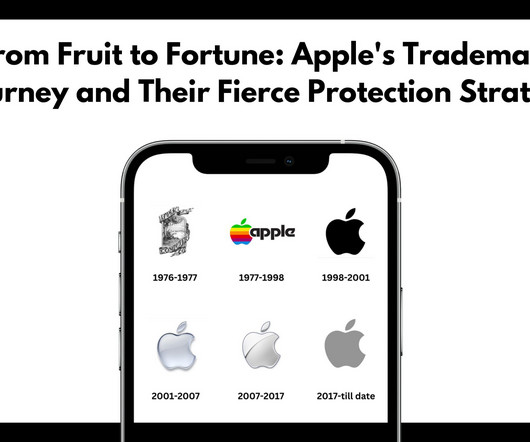From Fruit to Fortune: Apple’s Trademark Journey and Their Fierce Protection Strategy
Intepat
MAY 28, 2024
This success is largely attributed to Apple’s effective trademarking of various designs and sounds related to its products and services. This success is largely attributed to Apple’s effective trademarking of various designs and sounds related to its products and services. Prior Registration and Use: Apple Inc.













Let's personalize your content